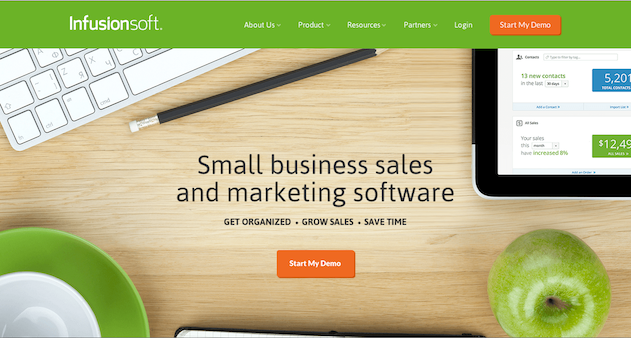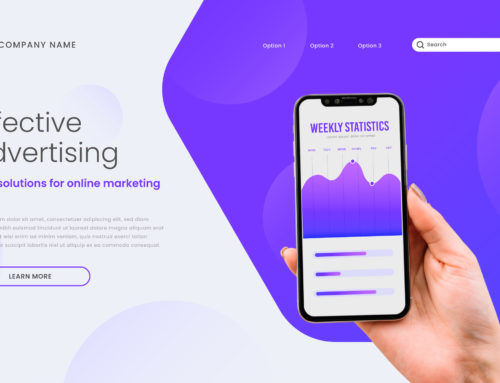“Value propositions” are darlings among business school professors. But to many business owners, they’re nothing more than empty marketing jargon. It’s a struggle to understand and apply the concepts effectively in the real world.
This is a shame because a compelling value proposition can mean the difference between becoming an industry leader and barely scraping by. Understanding how to craft the perfect value proposition for your business—and how to communicate it effectively to your ideal customers—can help you stand out from your competitors in all the right ways.
Keep reading to find out how to do it…

Photo Credit: stevendepolo via Compfight cc
What’s a “Value Proposition,” Anyway?
Let’s start at the beginning because it’s a common place where businesses get tripped up.
What exactly is a value proposition anyway?
According to Investopedia, a value proposition is:
A business or marketing statement that summarizes why a consumer should buy a product or use a service. This statement should convince a potential consumer that one particular product or service will add more value or better solve a problem than other similar offerings.
And that’s just a single definition among many. When thought leaders disagree so much over what a “value proposition” even means, it’s no wonder why so many businesses are struggling to use them effectively.
Of all the different definitions out there, marketing expert Peter Sandeen’s version rings the most true to me:
A believable collection of the most persuasive reasons people should notice you and take the action you’re asking for.
Whatever definition you prefer, the common elements are: 1) an explanation of the benefits your business offers; 2) whom it offers those benefits to; and 3) why you’re uniquely better than anyone else.
The Dangers of a Bad (or Nonexistent) Value Proposition
A winning value proposition convinces your ideal customers that you can solve their problems better than anyone else. Once it’s in place, it creates an “economic moat” that separates you from competitors in your niche.
Failing to use a value proposition, on the other hand, makes your business blend in with all the others in your niche. Without a better way to evaluate their options, customers are left to compare businesses based on their most obvious feature: price.
John Jantsch from Duct Tape Marketing got it right. “Find a way to differentiate your business, one that matters to somebody, or you’ll be forever doomed to compete on price.”
Not having a value proposition is especially harmful for companies still establishing themselves. They don’t have the brand recognition of Apple or Coca-Cola, so it’s up to them to give busy consumers reasons to pay attention to them. Failing to use a value proposition robs them of one of the most effective tools to do that.
How can you avoid blending in with your competitors and engaging in endless price wars?
By doing what most businesses are unwilling or unable to do. By packaging up the most compelling reasons why your ideal customers should choose you and articling that message in a concise value proposition.
Here’s how to create—and refine—a winning value proposition in four simple steps…
Creating (and Refining) the Best Value Proposition for Your Business
If you’ve struggled to create a successful value proposition, you can follow the four-step roadmap below to put your best foot forward and win more customers:
Step 1: Understand Your Target Customers
One of the most common mistakes businesses make when crafting value propositions is trying to appeal to everyone who visits their websites.
This result? A watered-down value proposition that ends up appealing to no one. Catering to everyone backfires because visitors don’t feel like the products or services being sold are “made for them.” There’s always a competitor offering a better fit for their unique situation.
The first step to creating a winning value proposition is identifying your ideal customers and finding out what makes them tick. This gives you the foundation you need to tailor your value proposition to focus on benefits that group would find the most important.
What motivates your ideal customers might be very different than what motivates the majority of the population. And that’s okay, as long as you know what those motivations are and how to leverage them.
You won’t see Ferrari commercials focused on fuel efficiency. That benefit is much more important from the perspective of a budget-conscious Toyota Camry shopper. But most Ferrari owners wouldn’t give it any thought; they’re more concerned with the craftsmanship of the cars, how fast they can go, and the prestige of owning one.
The best bet to truly understand your target customers? Pick half a dozen of your favorite customers and get them on the phone for a quick interview. John Jantsch put together an excellent list of questions to shed light on the unique value your business creates.
What you assume are important selling points might not matter nearly as much to your ideal customers as you think. Likewise, a “little thing” you do could be what’s turning prospects into raving fans. You’ll never know until you ask.
You can better understand your target customers by:
- Gathering feedback from current and former customers
- Creating customer profiles or personas
- Conducting online surveys with a tool like SurveyMonkey or Qualaroo
Step 2: Craft Your Value Proposition
Once you’ve identified your ideal customers and what motivates them, it’s time to design a value proposition that draws them in.
Despite what many business owners believe, a value proposition is more than just a slogan or a tagline. Urging people to “Just do it” works well for industry titans like Nike, but it probably won’t work for you.
A solid value proposition is slightly more complicated than that. According to Gregory Ciotti from the HelpScout blog, a combination of “headlines, sub-headings… and visual elements can be part of an effective value proposition.”
Excellent value propositions answer these three critical questions:
- What does your business do?
- Who is your business for?
- How is your business useful?
Go to most business websites, and you’ll notice they’re leaving one or more of these questions unanswered. They leave it up to visitors to “fill in the blanks.” But what usually happens? The visitors turn to the business’ competitors—people who do a better job of presenting compelling value propositions—instead.
Clarity is essential. The better you can distill your answers to the three questions into their most basic forms (and the faster you can do it), the more powerful your value proposition.
Take a look how Infusionsoft does it:

In a span of just three lines, they share what their business is (sales and marketing software), whom it’s useful for (small businesses), and how it’s useful (organization, sales, and saving time). Visitors get all this vital information without even having to scroll down the page.
Differentiation is another crucial component of any great value proposition. In a customer’s eyes, businesses that can do something no other businesses can do offer more valuable solutions.
You don’t have to be “the best” in every facet of your business; that’s practically impossible. But if you can excel in at least one aspect—and convey that in your value proposition—you can become an industry leader:
Take a look how Rolex does this:

People don’t buy a Rolex for a bargain price. They buy for quality, timeless style, and as a status symbol. Rolex understands this, so they focus on it in their value proposition.
Step 3: Maximize Credibility and Minimize Perceived Risk
I passed by a restaurant the other day with a sign claiming it served the “best barbecue in Texas.” It made me smile, but I didn’t believe the hype.
Value propositions, even if they’re well crafted to appeal to your ideal customers, aren’t effective if they’re nothing more than marketing hype. They have to be relevant and credible to have the greatest impact on your conversions.
You’ve done most of the hard work once you’ve identified your ideal customers and created a value proposition that aligns with their major motivations. But you aren’t done yet. Taking a moment to ensure your value proposition is believable will separate you from your competitors.
You can make your value propositions more credible in the eyes of your target customers with a one-two punch of: 1) strengthening your claims, and 2) minimizing the prospective customers’ perceived risk.
You can strengthen your claims by:
- Focusing on what you can prove. No one believes you’re selling the “best barbecue in Texas.” But people might believe you’re selling the “3-time Austin Chronicle winner for Austin’s best barbecue.” If they don’t, they can look it up!
- Leveraging social proof. One of the easiest ways to reassure prospects that you’re offering something uniquely valuable: display how many customers you’ve already helped.
- Being specific. People are much more willing to believe specific claims over general ones. An auto shop increased their conversion rates by 58% simply by changing their value proposition from “Simple Fix for Blown Head Gaskets” to “Repairs Blown Head Gaskets in Just One Hour.”
- Testimonials from happy customers. Prospects will trust unbiased customer reviews more than your (admittedly biased) sales copy any day of the week.
You can minimize your customers’ perceived risk by:
- Guaranteeing customer satisfaction or a specific result. Guarantees eliminate one of the biggest obstacles that keep people from doing business with you: the fear of financial loss.
- Offering a free trial period. This gives people the opportunity to test your product or service without any obligations. And it shows tremendous confidence on your part; you stand behind what you’re selling.
- Making it easy to get out of contracts or ongoing obligations. Offering customers a way out if their situation changes later on gives them the peace of mind they need to pull the trigger now.
Step 4: Test, Test, and Test Some More
Of the businesses that take the time to create value propositions, many don’t even test them. They either base their assumptions on a small amount of customer feedback or go with their intuition… and they stick with it.
These businesses are doing themselves a disservice. Crafting a value proposition is just the first step. Refining it through a data-driven approach can skyrocket your conversions and pave the way to long-term success.
Conversion expert Peep Laja doesn’t beat around the bush when it comes to the importance of testing your value proposition.
If I could give you only once piece of conversion advice, ‘test your value proposition’ would be it.
You can split-test value propositions just like you split test headlines, calls to action, or other website elements. Landing pages are the perfect opportunity. Funnel visitors to landing pages with different value propositions, track the conversions, and use the insights to refine your value proposition going forward.
Another option is to use PPC advertising to refine your value proposition. By targeting the same customers and serving them different versions of PPC ads, you can see which angle works the best to grab attention and drive action.
Conscious effort and strategy will get you going, but continuous testing will take your value proposition to the next level. It’s integral to any effective conversion optimization strategy.
Your Turn
In an online space where attention is the prized commodity, creating and articulating a strong value proposition can help you come out on top.
Most businesses struggle with this. But you don’t have to. Commit to testing and refining your value proposition as part of your conversion optimization strategy, and enjoy the payoff for months and years to come.
What do you struggle with the most when creating your value proposition? Leave a comment below and let me know!





